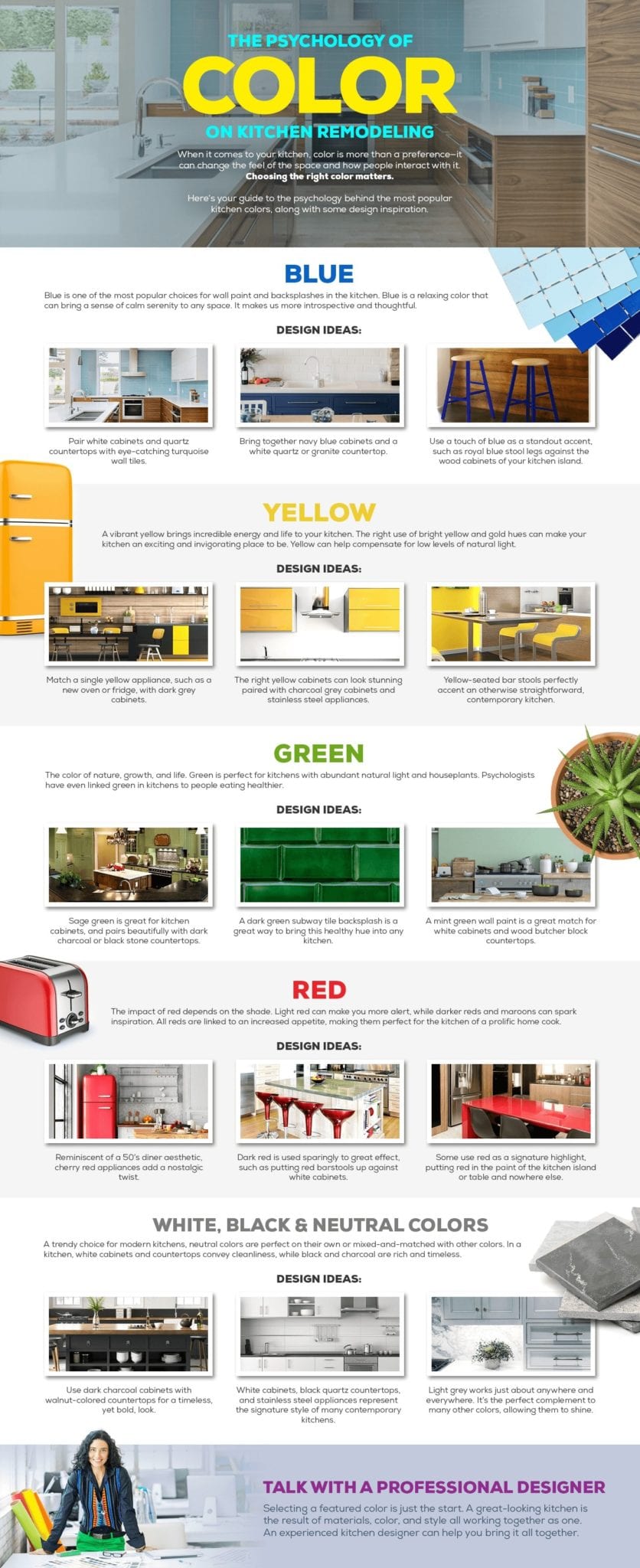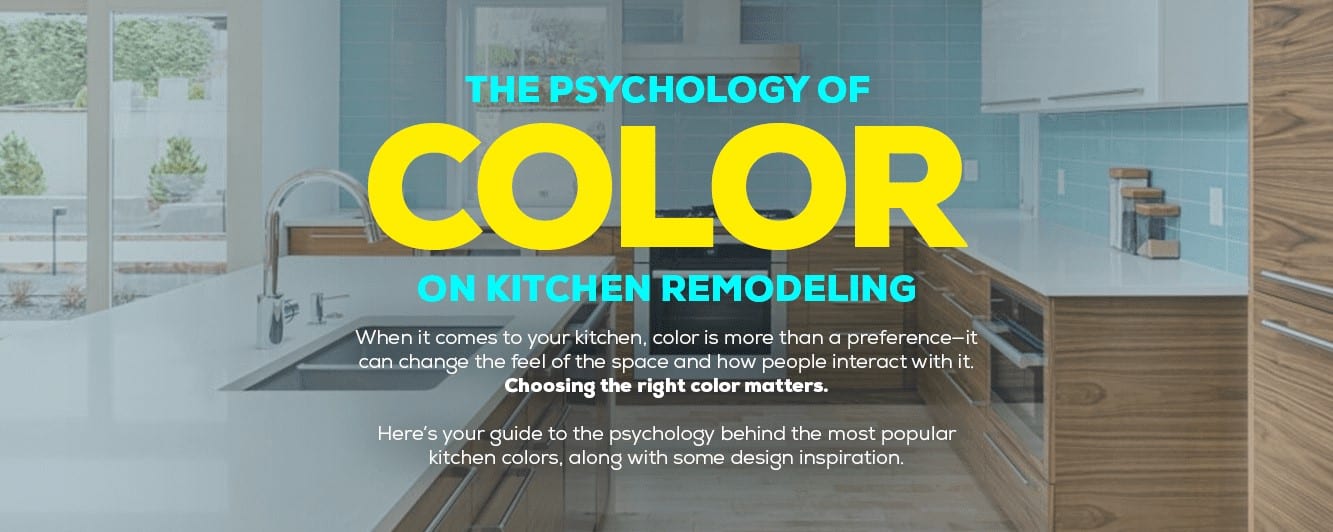Color has power. Most of us are subtly influenced by color without ever realizing it. In fact, there’s an entire psychology to color that informs what colors can do. In this article, we’ll review why color matters, how to properly incorporate neutral colors, and when you need to start working with a kitchen design professional.
Color is more than an aesthetic choice
We tend to think of color as just a personal preference. But, look beyond that, and you’ll realize that color is also important to the “feel” of the room. Speaking from a psychological perspective, different colors can make us feel different things. Blue is calming and inspires introspection and thoughtfulness. If you want your kitchen to be a port in the storm that is life, it’s a great color choice. In contrast, yellow is invigorating and can fill you with energy—perfect for a weekday morning before you’ve had your coffee.
How do you add color to a kitchen? Many homeowners introduce color into the space through their cabinets, backsplash, appliances, or wall paint. Some colors work better as a small accent than as a primary feature. Red can be stylish, retro, and appetite-inducing. But, too much of it and you run the risk of both literally and figuratively seeing red!
Don’t overlook neutral colors!
Compared to reds, yellows, blues, and greens, grey, black, and white might seem a little boring. After all, few people want a monochrome kitchen. Yet, when used effectively, neutral colors can help bring balance to the space and prevent your color choices from becoming overwhelming. A kitchen that features royal blue cabinets might want a white granite countertop for contrast. Or, a bright yellow backsplash might look perfect paired with those charcoal-colored cabinets.
Contrast is good. You want your kitchen color choices to stand out, and neutral colors help them do just that. If you’re struggling to fit them into your project, talk to a design professional to get advice on how to move forward.
Work with a design professional
Now that we’ve reviewed the basics of color as applied to your kitchen, it’s time to talk to an expert who can help you plan out your kitchen remodeling project. After all, every home—and kitchen—is different. In addition to your preference and the psychology of any given color, you may need to also consider how that color will look in your specific home, particularly given how much light is available in your kitchen. Many homeowners make the mistake of falling in love with dark colors—black granite, dark charcoal cabinets, or a black backsplash—only to find that it’s far too dark for a kitchen with little-to-no natural light.
A kitchen design professional is someone who will walk you through your options and help you create the kitchen of your dreams. While you’re waiting for your first consultation with them, take a look at this infographic. It takes an even more comprehensive look at the psychology of color than our review above.



